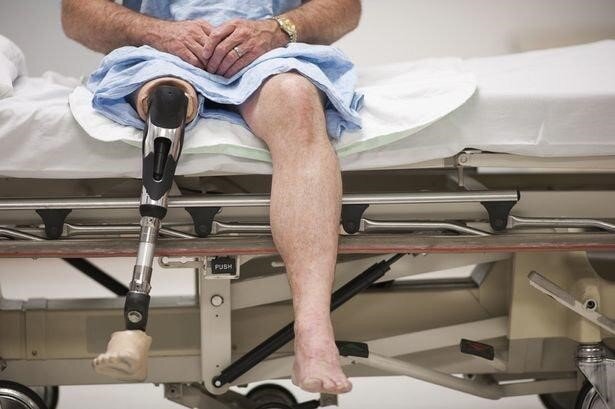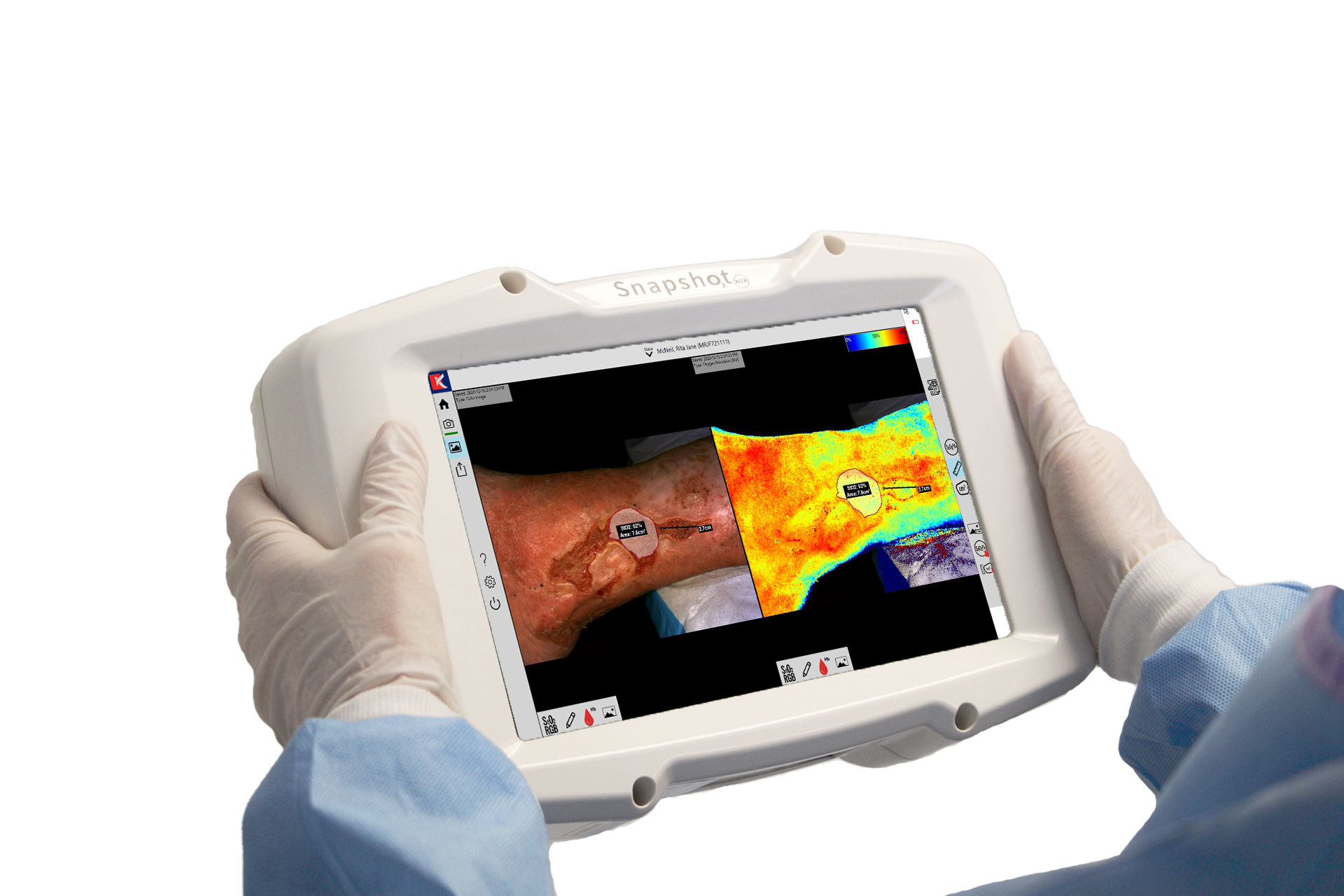SnapshotNIR provides peace of mind to patients, caregivers, and clinicians in community-based care
“The COVID-19 pandemic is driving significant change in the healthcare system and disrupting the best practices for diabetic limb preservation, leaving large numbers of patients without care. Patients with diabetes and foot ulcers are at increased risk for infections, hospitalization, amputations, and death.” [1]
Wound care is changing.
In the era before COVID-19, the goal of wound care was “healing wounds at any cost” [2] to avoid amputation. “Limb preservation” is widely accepted in the wound care community as the only acceptable outcome for the chronic wound patient. Central to the success of the limb preservation strategy is regular care and vigilant monitoring, most often provided in the hospital or clinic setting. For patients where clinic and specialized wound center access is challenging, this hospital-centric model of care can be difficult to achieve. Any short-term neglect in wound management may lead to more advanced wounds which take longer to heal, are more time-consuming and expensive to treat, and may ultimately lead to an increased rate of amputation.
In this new landscape, the goal is to avoid complications while reducing the burden on the healthcare system by keeping diabetic foot and wound patients safe, functional, and at home. This new paradigm for wound management and limb preservation shifts away from hospital care to community-based care. This shift to decentralize wound care management will benefit the hospital-access-challenged and the rurally located patient alike and will likely serve to enhance the medical systems’ wound management program overall. However, to make the transition, healthcare providers need better tools for assessing patient wounds in this setting.
The delivery and uptake of oxygen in tissue is critical to cellular health and wound healing. Assessing and tracking tissue oxygenation (StO2) at a wound site or area of interest is a key component of wound management. Kent’s accurate imaging technology, SnapshotNIR, allows a healthcare worker to easily acquire tissue oxygen images using near-infrared spectroscopy to track and document the effectiveness of treatment and to help assess the capacity of a wound to heal. This means that the patient can remain local with further support from a clinician at a separate site or seek further assessment or intervention at an advanced wound care center only when it is deemed absolutely necessary, avoiding unwarranted travel time and costs.
SnapshotNIR placed in the hands of the home healthcare worker, visiting nurse, or rural/private clinic who is already seeing the patient, can provide extremely valuable and timely information to affect treatment decisions. SnapshotNIR can help create a sense of urgency, visually demonstrating the need to seek attention on a wound when there is a problem that must be dealt with immediately. The technology also gives confidence to the caregiver that the patient can continue to stay at home and that their wound is trending towards healing. For clinicians, medical collaborations are enhanced as images can be easily and securely shared to a remote location for review by a physician or specialist.
The equipment and procedures commonly used today to obtain vascular and tissue oxygenation assessments are often large and non-mobile, costly to acquire, and involve per-patient disposables, limiting their accessibility. These procedures can also take upwards of one hour to complete, require specially trained technicians for data collection, and are often faced with challenges in patient scheduling, resulting in assessment delays. They all involve direct patient contact. In a remote environment, outside of clinical laboratories and hospital settings, obtaining reliable and repeatable non-invasive vascular studies can be especially challenging.
Alternatively, SnapshotNIR is portable, handheld, and lightweight. It’s similar in action to a camera, measuring the proportion of oxygen carried by hemoglobin circulating in the capillaries of superficial tissue. The images are captured without any patient contact, providing tissue oxygenation (StO2) information for assessment.
In today’s varied and evolving healthcare landscape, Kent Imaging is committed to enhancing its products and solutions to support clinicians in reducing complications and delivering better patient outcomes. With technology like SnapshotNIR, we can ensure patients continue to get a high quality of care in the post-COVID environment.
SnapshotNIR is available today to support wound care providers now and into the future.
[1] Rogers LC, Lavery LA, Joseph WS, Armstrong DG. All Feet on Deck - The Role of Podiatry During the COVID-19 Pandemic: Preventing hospitalizations in an overburdened healthcare system, reducing amputation and death in people with diabetes [published online ahead of print, 2020 Mar 25]. J Am Podiatry Med Assoc. 2020;10.7547/20-051. doi:10.7547/20-051
[2] Rogers LC, Armstrong DG, Capotorto, J et al. Wound Center Without Walls: The new model of providing care during the COVID-19 pandemic [published online ahead of print, 2020 Apr 24]. WoundsResearch.com 2020







